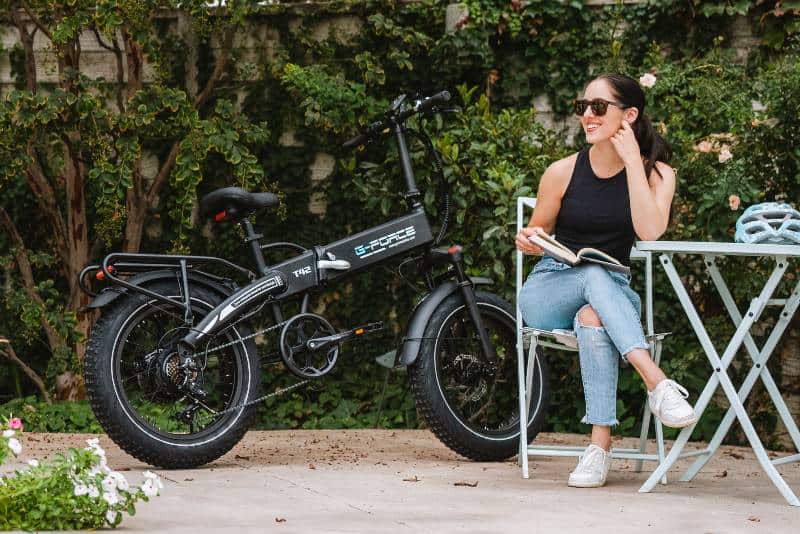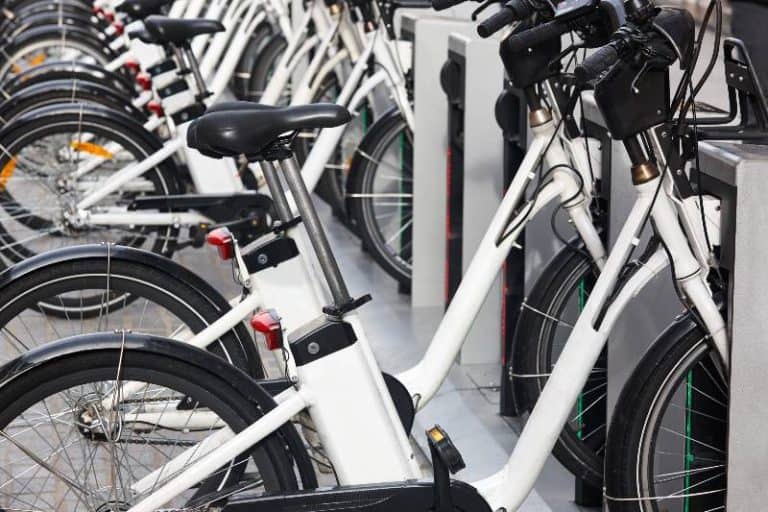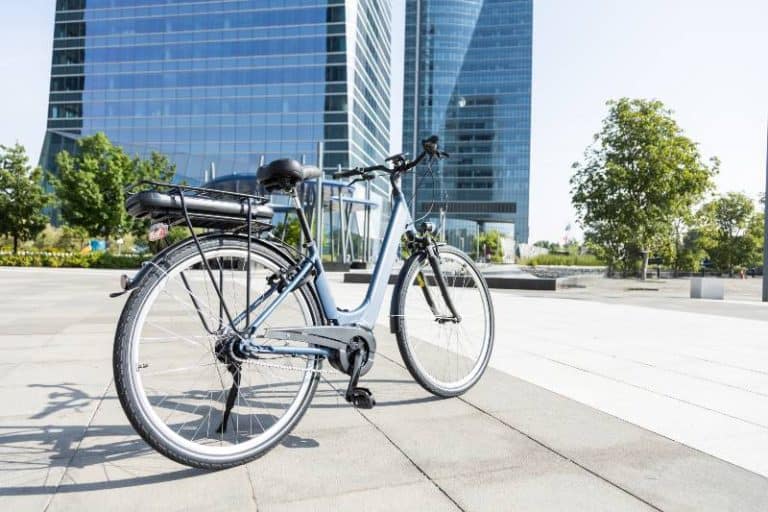The Perfect E-bike: How to Make the Right Choice
Are you trying to find the perfect e-bike for your needs? If so, you’ve come to the right place. In this blog post, we’ll be breaking down all of the important things to consider when choosing an e-bike. Whether you want a reliable electric bicycle for commuting or a mountain-style electric bike that can take on tough terrain, there are plenty of options out there – it’s just finding the one that’s best suited for your lifestyle and preferences! We’ll discuss the types of electric bicycles available, factors such as weight and durability to evaluate when shopping around, budget considerations, and more.
Take some time to read through our guide before making any purchasing decisions; we guarantee that with these tips in hand, you’ll be able to find your dream e-bike in no time!
Before choosing an e-bike, assess your needs, terrain, and fitness level. Also, consider factors like battery capacity and motor power. It’s a good idea to test-ride different models and seek advice from others. Take the time to compare options before making a decision and choose the e-bike that best aligns with your requirements for a perfect ride.
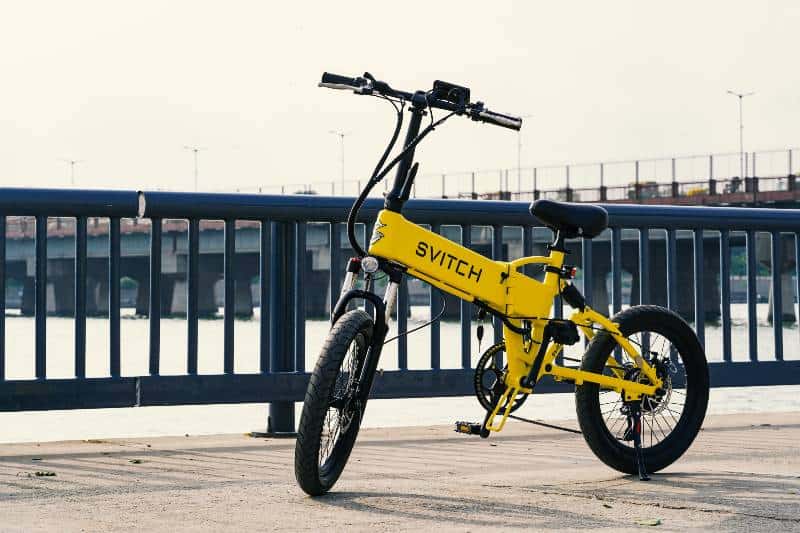
Key Takeaways
- Before choosing an e-bike, assess your riding purposes, terrain, and fitness level. This will help you select the right type and features that align with your specific requirements.
- Battery capacity, range, and charging time are crucial factors to consider. Additionally, pay attention to the power and torque of the motor, as they determine the level of assistance and performance you’ll experience while riding.
- Take the opportunity to test ride different e-bikes at local bike shops. This hands-on experience will give you a feel for the ride quality and help you compare various models. Additionally, reading reviews and seeking advice from experienced riders can provide valuable insights to make an informed choice.
Assessing Your Needs
When it comes to choosing the perfect e-bike, it’s essential to thoroughly assess your needs and consider various factors that will enhance your riding experience. By taking into account your riding goals, terrain, fitness level, and desired assistance, you can make an informed decision.
Determining your riding goals and purposes
First and foremost, it’s crucial to determine your riding goals and purposes. Are you planning to use the e-bike for daily commuting, recreational rides, or long-distance touring? Understanding your intended use will help you narrow down your options. For example, if you primarily plan to use the e-bike for commuting, you might prioritize features such as lightweight design, maneuverability in traffic, and sufficient battery range to cover your daily distance.
Identifying your riding terrain and conditions
Identifying your riding terrain and conditions is another crucial aspect. Consider whether you will be riding mostly on paved roads, off-road trails, or a combination of both. This will influence the type of e-bike you should choose. For instance, if you frequently encounter steep hills or rugged terrain, a mountain e-bike with robust suspension and powerful motor assistance would be suitable. On the other hand, if you predominantly ride on smooth city streets, a more lightweight and agile urban e-bike might be the better option.
Considering your fitness level and desired assistance
Your fitness level and desired assistance level are also important factors to consider. E-bikes come with different levels of pedal assist, ranging from minimal assistance to more significant boosts. If you’re a seasoned cyclist looking for an e-bike to augment your fitness routine, you might opt for a model with lower assistance levels, allowing you to engage in more physical exertion. Conversely, if you have limited physical fitness or prefer a more relaxed riding experience, a model with higher levels of assistance will provide a smoother and easier ride.
Let’s consider an example: Suppose you’re a daily commuter living in a hilly area with limited cycling experience. You want an e-bike that can assist you during uphill rides and provide a comfortable and efficient means of transportation. In this case, you might prioritize an e-bike with a mid-drive motor, which offers more torque and assists your pedaling power. Additionally, selecting an e-bike with multiple assist levels would allow you to adjust the level of assistance based on your fitness level and the steepness of the terrain.
Understanding E-bike Types
Understanding the different types of e-bikes is crucial when choosing the perfect one for your needs. Each e-bike category, such as city, mountain, hybrid, and more, offers specific features and functionalities designed to cater to different riding preferences and environments.
Exploring different e-bike categories (city, mountain, hybrid, etc.)
- City E-bikes: City e-bikes are designed for urban commuting and provide a comfortable and efficient means of transportation in city streets. They often feature a more upright riding position, integrated lights, fenders, and a rear rack for carrying groceries or other essentials. City e-bikes typically have narrower tires for smooth pavement and are equipped with a motor and battery system that provides sufficient power for city riding. An example of a city e-bike is the Trek Verve+ 2, which combines a sleek design with practical features for urban riding.
- Mountain E-bikes: If you’re an avid mountain biker, this is for you! Mountain e-bikes, also known as electric mountain bikes or eMTBs, are built to tackle off-road trails and rugged terrains. They come with sturdy frames, enhanced suspension systems, and knobby tires for improved traction on uneven surfaces. The motor on mountain e-bikes provides additional power to conquer steep climbs and technical descents. For instance, the Specialized Turbo Levo is a popular mountain e-bike that offers a powerful motor, advanced suspension, and durable components, enabling riders to explore challenging mountain trails with ease.
- Hybrid E-bikes: Hybrid e-bikes combine features of both road and mountain e-bikes, making them versatile for a variety of riding conditions. These e-bikes feature a more relaxed riding position than road bikes and often have wider tires for better stability on both paved and unpaved surfaces. Hybrid e-bikes are suitable for commuting, recreational rides, and light off-road adventures. The Cannondale Quick Neo SL is an example of a hybrid e-bike that offers a balance between speed, comfort, and versatility.
- Folding E-bikes: Folding e-bikes are designed for easy storage and transportation. They feature a collapsible frame that allows the bike to be folded into a compact size, making them convenient for commuter bikes who need to carry their e-bikes on public transportation or store them in limited spaces. Folding bikes often have smaller wheels for better maneuverability in urban environments. The Brompton Electric is a popular folding bike known for its compact fold, lightweight design, and electric assistance for urban commuting.
- Cargo E-bikes: Cargo e-bikes are specifically designed for carrying heavy loads and transporting goods. They feature a sturdy frame, extended wheelbase, and a large cargo area at the front or rear, capable of accommodating various cargo accessories such as racks, baskets, or boxes. Cargo e-bikes are ideal for running errands, grocery shopping, or even transporting children. The Riese & Müller Load is a prime example of a cargo e-bike that combines robust construction, ample cargo capacity, and powerful electric assistance.
These are just a few examples of e-bike categories, and there are even more specialized types available, such as touring e-bikes, fat tire e-bikes, and electric road bikes. By understanding the features and functionalities of each e-bike type, you can select the one that aligns with your riding preferences, terrain, and intended use, ensuring a delightful and tailored riding experience.
Make sure to take the time to read this insightful article titled “The Perfect E-bike: How to Make the Right Choice“. In this comprehensive piece, you will find a wealth of information and helpful tips that will guide you toward selecting the ideal electric bicycle for your needs. Gain a deeper understanding of the key factors to consider, such as battery life, motor power, and overall durability. Don’t miss out on this opportunity to make an informed decision and embark on an electrifying cycling journey!
Battery and Motor Considerations
When choosing an e-bike, it’s important to consider the battery and motor specifications, as they greatly impact the performance and usability of the bike. Let’s examine the key considerations related to battery capacity, range, motor power, torque, and battery charging time and availability.
Battery Capacity and Range
Battery capacity refers to the amount of energy stored in the e-bike’s battery. It is typically measured in watt-hours (Wh). A higher battery capacity allows for longer rides without requiring frequent recharging. Consider your riding needs and the distances you plan to cover. If you have long commutes or enjoy extended rides, opting for a higher battery capacity is advisable.
For example, a 500Wh battery might provide a range of 40-80 miles, depending on factors such as terrain, rider weight, and assistance level.
Motor Power and Torque
The motor power determines the level of assistance provided by the e-bike. It is measured in watts (W) and can range from 250W to 1000W or more. Higher motor power generally offers more robust assistance, particularly beneficial when tackling steep hills or off-road trails. However, it’s essential to consider local regulations as some jurisdictions have legal limits on motor power.
Additionally, torque is another critical factor related to motor performance. Torque represents the rotational force generated by the motor and impacts the bike’s ability to accelerate and handle challenging terrain. More torque provides better hill-climbing ability and improved performance in demanding riding conditions.
Battery Charging Time and Availability
Battery charging time is an important consideration, especially if you rely on your e-bike for daily commuting or have limited time for charging. Charging time varies depending on the battery capacity and the charger’s specifications. Higher-capacity batteries often require more time to charge fully. Rapid chargers are available for some e-bike models, significantly reducing charging time. It’s worth checking if the e-bike you’re interested in supports fast charging.
Furthermore, consider the availability of charging infrastructure. Are there convenient charging stations or power outlets in your area? Assessing the accessibility of charging options is crucial, particularly for long rides or when planning to use the e-bike in areas with limited charging facilities. It’s also helpful to inquire about spare batteries or the possibility of carrying an extra battery if necessary.
By carefully considering battery capacity, range, motor power, torque, and battery charging time and availability, you can select an e-bike that aligns with your riding needs, provides sufficient assistance and range, and offers convenient charging options. These considerations ensure that you enjoy a reliable and optimal e-biking experience while accommodating your specific requirements.
Frame and Components
When it comes to choosing an e-bike, paying attention to the frame and components is crucial for a comfortable, reliable, and enjoyable riding experience. Let’s dive into the key considerations related to frame size and geometry, suspension options and comfort features, as well as the quality of brakes, gears, and other components.
Selecting the Right Frame Size and Geometry
Choosing the appropriate frame size is essential for a comfortable and ergonomic riding position. E-bikes are available in different frame sizes, typically measured in inches or centimeters. To determine the right frame size, consider your height, inseam measurement, and riding preferences.
Consulting a size chart provided by the manufacturer or seeking guidance from a bike shop can help you find a suitable frame size. Opting for a well-fitted frame ensures proper reach to the handlebars, a comfortable pedaling position, and efficient power transfer.
In addition to frame size, consider the frame geometry. Different e-bike categories may have varying frame geometries to accommodate specific riding styles and purposes. For example, city e-bikes often feature a more upright riding position for enhanced visibility and comfort during urban commuting.
On the other hand, a mountain bike might have a slacker and more aggressive geometry to tackle challenging off-road trails. Understanding your riding needs and the intended use of the e-bike will assist in selecting the appropriate frame geometry.
Discussing Suspension Options and Comfort Features:
The suspension system of an e-bike greatly affects comfort and handling, particularly on uneven terrain. Suspension options can include suspension forks, rear suspension, or a combination of both.
Suspension forks are commonly found on mountain e-bikes. They help absorb impacts from rough terrain, providing a smoother ride and better control. Full-suspension e-bikes have both front and rear suspension, offering even greater comfort and improved traction on challenging trails.
For city or hybrid e-bikes, models may feature a suspension seat post or wider tires with added cushioning to enhance ride quality and absorb vibrations. These comfort features contribute to a more pleasant and enjoyable riding experience, particularly during long rides or on rougher surfaces.
Considering the Quality of Brakes, Gears, and Other Components:
The quality of brakes, gears, and other components significantly affects the performance, reliability, and safety of an e-bike.
Brakes are a critical component, and reliable stopping power is essential. Disc brakes, both hydraulic and mechanical, are commonly found on e-bikes due to their excellent performance, especially in adverse weather conditions. Ensure that the e-bike you choose is an electric bike equipped with dependable brake systems from reputable manufacturers.
Gears play a crucial role in assisting your pedaling efficiency and adapting to different terrains. E-bikes often feature derailleur systems or internally geared hubs. High-quality gear components provide smoother shifting, increased durability, and a wide range of gear ratios to accommodate varying riding conditions.
Additionally, consider the overall quality of other components such as the drivetrain, handlebars, saddle, and tires. A well-designed drivetrain with quality components reduces maintenance needs and ensures efficient power transfer. Comfortable handlebars and a suitable saddle contribute to a pleasant riding experience, especially during longer rides. Durable and puncture-resistant tires offer reliability and grip on different surfaces.
Prioritize e-bike models that feature components from trusted brands known for their quality, reliability, and performance. Choosing an e-bike with reputable brakes, gears, and other components minimizes the need for frequent repairs and replacements, ensuring a smoother and more enjoyable riding experience.
By selecting the right frame size and geometry, considering suspension options and comfort features, and evaluating the quality of brakes, gears, and other components, you can choose an e-bike that offers optimal comfort, performance, and durability. These considerations ensure a reliable and enjoyable riding experience tailored to your specific needs and preferences.
Testing and Comparing E-bikes
When it comes to testing and comparing e-bikes, there are several approaches you can take to make an informed decision. By visiting local bike shops for test rides, reading reviews, and comparing specifications online, as well as seeking advice from experienced e-bike riders or forums, you can gather valuable insights and firsthand experiences to help you choose the right e-bike for your needs.
Visiting Local Bike Shops for Test Rides:
One of the best ways to evaluate an e-bike is by visiting local bike shops and taking them for test rides. Test rides allow you to experience the bike’s performance, comfort, and handling firsthand. You can assess how the e-bike accelerates, handles corners, and tackles different terrains.
Additionally, you can get a feel for the e-bike’s ergonomics, including the riding position, saddle comfort, and ease of operation. Bike shop staff can also provide guidance and answer any questions you may have. By trying out multiple e-bike models, you can compare their features, performance, and overall riding experience to make a well-informed decision.
Reading Reviews and Comparing Specifications Online
Another valuable resource for comparing e-bikes is reading online reviews and comparing their specifications. There are numerous websites and online platforms dedicated to e-bike reviews where users share their experiences and provide insights into various models. Reading these reviews can give you a comprehensive understanding of the strengths and weaknesses of different e-bikes.
Pay attention to aspects such as battery life, motor performance, build quality and user satisfaction. Additionally, comparing specifications, such as battery capacity, motor power, weight, and available features, can help you narrow down your options based on your specific requirements.
Seeking Advice from Experienced E-bike Riders or Forums
Engaging with experienced e-bike riders or online forums can provide valuable advice and insights. These individuals have firsthand knowledge and experience with different e-bike models, and they can offer guidance based on their own preferences and riding styles.
Joining e-bike communities or forums allows you to ask specific questions, seek recommendations, and learn from others’ experiences. You may gain valuable information about long-term reliability, customer support, and any common issues associated with specific e-bike models. Remember to consider multiple opinions and perspectives to make a well-rounded assessment.
For example, you might find a local e-bike enthusiast group on social media where you can connect with riders who have extensive knowledge of different e-bike models and can provide insights based on their personal experiences. They may offer recommendations based on your intended use, budget, and preferences, helping you make a more informed decision.
By combining test rides at local bike shops, reading online reviews, comparing specifications, and seeking advice from experienced e-bike riders or forums, you can gather a wealth of information to evaluate and compare different e-bike models. This comprehensive approach ensures that you make a well-informed decision, considering various perspectives and personal experiences.
Budget and Value
Choosing the perfect e-bike can be an exciting yet challenging process, especially given the diverse range of options available in the market today. By considering a few key factors, such as budget, the value of different features, financing options, and warranties, you can ensure you make an informed decision that suits your specific needs and preferences.
Setting a Realistic Budget Range
The first step in selecting the ideal e-bike for you involves establishing a realistic budget range. E-bikes can range in price from several hundred dollars to over several thousand, depending on factors such as the brand, the build quality, the components used, and the level of technology incorporated.
For example, a basic e-bike with minimal features and a modest range may cost around $500, whereas a high-end model with advanced features like GPS tracking, regenerative braking, and extended battery life can cost upwards of $5,000.
Keep in mind that it’s not just the upfront cost of the e-bike you need to consider. You should also factor in the ongoing costs of maintenance, battery replacement, and any accessories you may need, like a helmet, lock, or additional lighting. Essentially, setting a realistic budget range means you need to take a holistic view of the costs involved, looking beyond the purchase price and into the lifecycle cost of the bike.
Weighing the Value of Different E-Bike Features
Once you have a budget range in mind, the next step is to evaluate the value of the various features e-bikes offer. Not all e-bikes are created equal, and the features that come with your bike can greatly influence its price and performance.
For instance, the range of the e-bike — how far it can go on a single charge — is one crucial feature. If you plan to use your e-bike for long commutes or extended trips, an e-bike with a high range (say, 50-70 miles per charge) would be invaluable, even if it costs a bit more. On the other hand, if you’ll be using your e-bike for short rides around the neighborhood, a model with a lower range (and a lower price tag) might be perfectly suitable.
Other significant features to consider include the motor type (hub motor vs. mid-drive motor), the power output, the level of pedal assist, the type of battery used, and any additional features such as integrated lights, racks, or fenders. Each feature offers its own set of advantages and trade-offs. For example, a mid-drive motor typically provides better balance and efficiency than hub motors, but it’s also more expensive and may require more maintenance.
Exploring Financing Options and Warranties
Finally, don’t overlook the importance of exploring financing options and warranties when choosing your e-bike. Some e-bike retailers offer financing plans that allow you to spread the cost of the bike over several months or even years, making it more affordable in the short term. However, remember that interest rates and fees can add to the overall cost of the bike in the long run.
In addition, a good warranty can provide peace of mind and protect your investment. Look for a comprehensive warranty that covers not only the frame of the e-bike but also the motor and battery, as these are the parts most likely to need repair or replacement. A standard warranty might cover the frame for several years, and the motor and battery for one to two years, but terms can vary widely from one manufacturer to another.
To provide an example, suppose you find an e-bike that perfectly fits your needs, but it’s slightly out of your budget range. By exploring financing options, you could potentially afford this bike by paying it off in smaller, regular installments. Furthermore, if this e-bike comes with a robust warranty, you can have the assurance that any unexpected issues within the warranty period won’t result in additional costs for you.
By setting a realistic budget range, carefully weighing the value of different e-bike features, and exploring financing options and warranties, you can confidently choose the perfect e-bike for your needs. Remember that the “perfect” e-bike doesn’t mean the most expensive one—it’s the one that best matches your requirements and lifestyle.
Safety and Legal Considerations
Understanding e-bike regulations and classifications
Before you can even begin to ponder the variety of e-bikes available in the market, it’s imperative to familiarize yourself with the laws and regulations regarding e-bikes in your locality. E-bike regulations can vary greatly from one jurisdiction to another, and these laws will directly influence the type of e-bike you can use and where you can ride it.
Regulatory Limits: In numerous jurisdictions, e-bikes are categorized based on their maximum speed and motor power. If an e-bike has a powerful motor that propels it at higher speeds, it may be legally classified as a moped or even a motorcycle.
This classification comes with additional responsibilities such as the requirement of a driver’s license, registration, and insurance, along with adherence to different road rules designed for motor vehicles. To paint a clearer picture, an e-bike with a 750W motor that can reach speeds of 28 mph might be classified differently than an e-bike with a 500W motor that tops out at 20 mph.
Classifications: E-bikes generally fall into one of three classes. Class 1 e-bikes are pedal-assist only, with no throttle, and have a maximum assisted speed of 20 mph. Imagine pedaling uphill and feeling an extra “push” as you ride, making the climb less strenuous — this is what a Class 1 e-bike offers. Class 2 e-bikes have a throttle that can propel the bike up to 20 mph, even without pedaling.
Think of it as having a built-in option to ride your bike like a scooter when you wish to take a break from pedaling. Finally, Class 3 e-bikes are pedal-assist (pedal power), but they can go up to 28 mph, catering to those who require a faster commute. However, note that some regions may restrict Class 3 bikes from certain bike paths that are accessible to Class 1 and 2 e-bikes due to their higher speed capabilities.
Local Laws: Regulations can differ vastly not only from country to country but also from city to city, or state to state. Aspects like helmet usage, riding on sidewalks, or utilizing bike lanes may be governed by specific laws in your region.
For instance, in one city, it might be perfectly legal to ride your e-bike on a public bike path, while in another, e-bikes might be banned from these paths due to safety concerns. Therefore, a comprehensive understanding of local e-bike laws is essential before you make your purchase.
Choosing e-bikes with appropriate safety features
Just like choosing conventional bikes, when selecting an e-bike, safety should never be compromised. Here are some features that can enhance your safety on an e-bike:
- Brakes: Pay particular attention to the quality of the brakes. E-bikes, especially those with robust motors and high-speed capabilities, should have reliable and responsive brakes. Disc brakes are a top choice for their superior stopping power and performance, even in wet and muddy conditions. So, if you’re caught in a downpour or have to brake suddenly to avoid an obstacle, you can trust disc brakes to bring you to a safe stop swiftly and smoothly.
- Lights: If your e-bike adventures are not limited to daylight hours, then front and rear wheel and lights are a must for your e-bike. Lights are paramount to ensure you are visible to other road users and to illuminate your path in low light conditions. Some e-bikes come with integrated lighting systems, while others might require you to install lights separately. Think of them as your guiding stars in the darkness, leading you safely on your journey.
- Reflectors: Reflectors work alongside lights to enhance your visibility, particularly during twilight hours or in foggy conditions. They reflect the headlights of vehicles, alerting drivers of your presence. An e-bike might come equipped with built-in reflectors, or you may need to attach them separately. But either way, this is a small addition that plays a significant role in ensuring your safety.
- Bell/Horn: An often overlooked but essential safety feature is a bell or horn. This is your voice on the road, helping you alert pedestrians, other cyclists, or even vehicles of your approach, especially in situations where they might not see you coming. A friendly ring or toot can prevent accidents and ensure harmonious shared use of pathways and roads.
Ensuring proper maintenance and upkeep for safety
Keeping your e-bike in top condition is not only beneficial for the bike’s longevity but also crucial for your safety. Regular maintenance checks and timely repairs can prevent accidents and ensure a smooth, safe ride every time.
- Regular Inspections: Develop a habit of inspecting your e-bike before each ride. Check the tire pressure, test the brakes, and ensure the lights and reflectors are clean and functioning correctly. If something seems off or doesn’t work as it should, it’s best to fix the issue before you hit the road.
- Professional Servicing: Just like a car, your e-bike also needs professional servicing. Depending on how frequently you ride, aim for a full service at least once or twice a year. This servicing should include checking the motor, battery health, brake system, and drivetrain, ensuring all parts are functioning optimally.
- Battery Care: The battery is the heart of your e-bike. Treat it well and it will serve you for many years. Always follow the manufacturer’s instructions for charging and storing the battery. Avoid exposing it to extreme temperatures as it can decrease the battery’s life. If your battery performance starts to decline, it may be time for a replacement to maintain the e-bike’s performance and safety.
By adhering to these guidelines, not only will you ensure your safety and comply with laws while riding an e-bike, but you’ll also select the e-bike that best suits your needs and environment.
So, go forth and embark on your e-biking journey with confidence!
Maintenance and Service
Just like any other mechanical device, an e-bike requires regular maintenance to ensure its longevity and safe operation. While professional servicing is recommended for complex tasks, there are a number of basic maintenance tasks that you can carry out yourself to keep your e-bike in optimal condition.
Battery Maintenance: The battery is, in essence, the lifeblood of your e-bike. To keep it performing at its peak, you should always follow the manufacturer’s instructions for charging and storing. It’s generally recommended to keep the battery charged between 20% and 80% to maximize its lifespan. Also, avoid exposing the battery to extreme temperatures, which can degrade its performance.
An example of good battery practice would be to recharge your battery after each ride if it has been substantially drained and remove it from the charger once it’s fully charged.
Cleaning: Regular cleaning is not just about aesthetics, it also helps in preventing the buildup of dirt and grime that could impact the bike’s performance. When cleaning your e-bike, avoid using high-pressure washers as they can damage the electronic components. Instead, use a bucket of soapy water and a soft brush or cloth to gently clean the frame and components. Be sure to dry the bike thoroughly after cleaning to prevent rust.
Tire Pressure and Treads: Regularly checking your tire pressure is critical to ensure a smooth ride. Over or under-inflated tires can affect handling, increase puncture risks, and degrade ride comfort. Likewise, keep an eye on your tire tread; worn-out tires lack traction and can be dangerous, especially in wet conditions. Imagine you’re preparing for a long journey on your e-bike. You’d check the tire pressure using a tire pressure gauge, ensuring it matches the recommended psi stated on the tire wall, and visually inspect the tires for any signs of wear or damage.
Exploring local service options and availability
While basic maintenance can be done at home, more complex tasks require the expertise of professionals. This is where local e-bike service centers come into play. But how to find the right one?
- Proximity: Ideally, the service center should be near your residence. This not only makes it convenient to reach but also ensures faster service in case of emergency repairs.
- Specialization: Choose a service center that specializes in e-bikes or at least has a strong familiarity with them. The mechanics there would have a deeper understanding of the complex interplay between mechanical and electronic components in e-bikes, thus ensuring more competent service.
- Reputation: Look for reviews and ask fellow e-bike users about their experience with local service centers. A good service center should have a strong reputation for quality service, customer satisfaction, and fair pricing.
Considering warranty coverage and support
Warranty coverage and customer support are crucial factors when purchasing an e-bike. They provide a safety net in case something goes wrong with your e-bike.
- Warranty Period: E-bikes typically come with a warranty period that can range from one to several years. The longer the warranty period, the longer you’re covered for certain damages or defects. For instance, if your e-bike’s motor malfunctions due to a manufacturing defect within the warranty period, the cost of repairs or replacement would typically be covered by the manufacturer.
- What’s Covered: Always read the fine print of the warranty to understand what is and isn’t covered. Most warranties cover manufacturing defects but may not cover normal wear and tear, damage due to misuse, or unauthorized modifications.
- Customer Support: Good customer support can be a lifesaver if you face any issues with your e-bike. They can guide you on troubleshooting issues, understanding warranty coverage, and organizing repairs or replacements if needed.
By carrying out regular maintenance, utilizing professional service centers, and understanding your warranty coverage, you can ensure that your e-bike remains in optimal condition and continues to provide you with safe and enjoyable rides for many years to come.
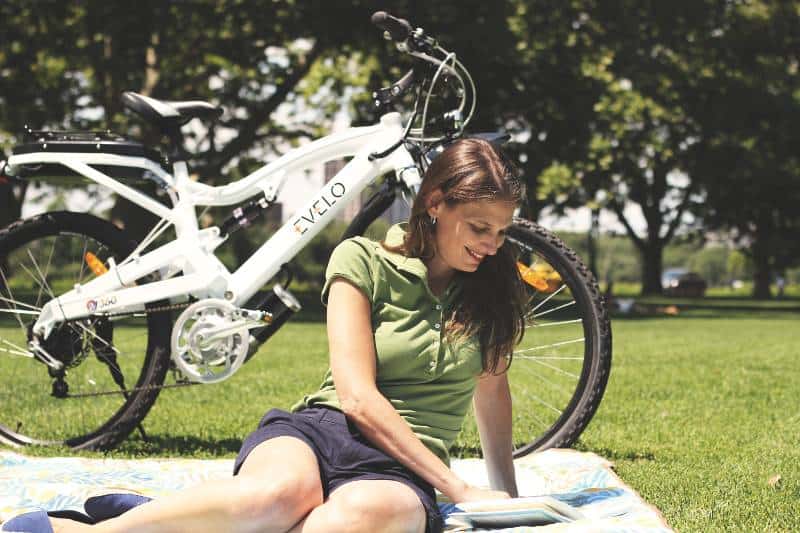
How to Choose the Perfect E-bike FAQs
Are there different sizes of e-bike frames available?
E-bike frames come in different sizes, ranging from 15 inches to 22 inches. It’s important to choose the right size for you because e-bike frames cannot be adjusted. Some e-bike manufacturers use size labels such as XS, S, M, L, etc. to measure their frames.
Can I test-ride an e-bike before purchasing it?
Testing a motorcycle and testing a car at dealerships are different. Nevertheless, some dealerships might offer demo days or provide demo bikes for testing. If buying from a private seller, you may be able to take a test drive, but not all private sellers may allow it.
Are e-bikes legal to ride on public roads and trails?
There are currently no federal laws imposing restrictions on the locations where you can ride your electric bike. (it typically depends on the state) Typically, an electric bicycle is permitted to operate on roadways and anywhere a standard bicycle is allowed. Nonetheless, it is essential for cyclists to adhere to the rules of the road, including riding on the right side, obeying traffic signals, and using proper turn signals.
How much maintenance do e-bikes require?
Just like any regular bicycle, your electric bike is going to need routine maintenance. However, don’t be put off by the bike’s electrical components as they actually require very little upkeep – it’s the tires, the brakes, and the wheels that need to be maintained by an experienced bike or bike mechanic.
What budget should I have in mind when buying an e-bike?
The cost of an e-bike depends on several factors, such as make, model, and components. Generally speaking, you should look at spending somewhere between $1,000 and $3,500 for a good quality e-bike. You can also find cheaper models if you shop around or opt for a used bike. However, it’s important to note that cheaper e-bikes may lack features or built-in components that are essential for a good ride experience. So try to buy the best e-bike within your budget.
Conclusion
Ultimately, choosing the perfect e-bike is a personal decision that should be tailored to your unique needs and preferences. Investing in an e-bike is a great way to enjoy the outdoors, stay fit, commute conveniently, or explore off the beaten path. Remember to assess your riding purposes, terrain of choice, and fitness level so you can make an informed decision on the type and features that are right for you. To learn more about our selection of e-bikes or get advice from our knowledgeable team of experts, don’t hesitate to reach out today. Plus, sign up for our newsletter now and get timely updates on the latest in electric bike technology!
